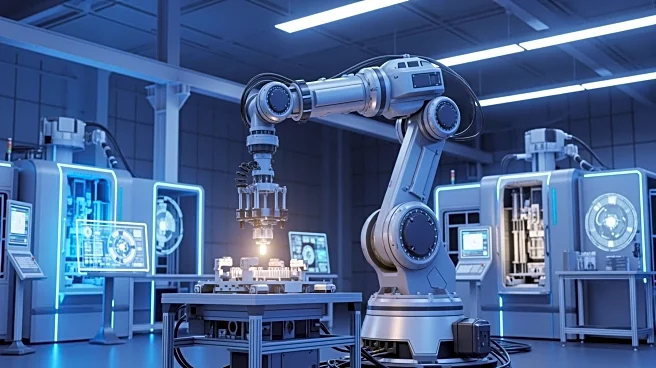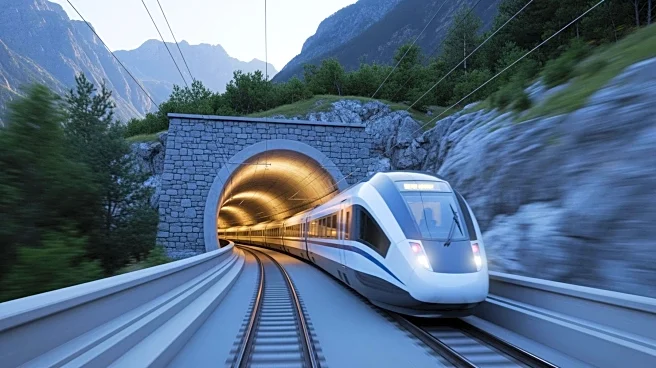What's Happening?
China has achieved a significant milestone in its automation sector, with the production of industrial robotic arms reaching a record high. According to the International Federation of Robotics, China now
operates more industrial robots than the rest of the world combined, with its stock of in-service robots surpassing 2 million units in 2024. In 2024 alone, China accounted for over half of all new global installations, deploying 295,000 of the world's 542,000 new industrial robots. This marks the 12th consecutive year that China has maintained its position as the world's largest market for industrial robots. The surge in production is driven by domestic manufacturers like Siasun and Estun Automation, who have leveraged government initiatives such as 'Made in China 2025' to grow rapidly.
Why It's Important?
The record production of industrial robotic arms in China has significant implications for the global automation market. Chinese manufacturers are increasingly becoming major suppliers, offering competitive pricing and responsive local service, which challenges established global players. This shift is not only reshaping China's manufacturing base but also redefining the balance of power in global industrial automation. As Chinese companies continue to innovate in areas like collaborative robots and AI-enhanced systems, they are positioned to capture more global market share. This development could lead to increased competition and potentially lower costs for industrial automation worldwide, benefiting industries reliant on robotics.
What's Next?
Chinese companies are expected to continue solidifying their hold on the domestic mass market while increasingly challenging the global establishment. Their expansion into overseas markets, particularly in Southeast Asia, Mexico, and Thailand, indicates a strategic move to diversify supply chains away from China. This could lead to a more stratified and globally competitive market, where foreign players coexist with Chinese manufacturers. The ongoing innovation and cost advantages of Chinese companies may further disrupt the global automation landscape, prompting established players to adapt to maintain their market positions.
Beyond the Headlines
The rise of Chinese industrial robotics is not just a technological advancement but also a strategic economic move. It reflects China's ambition to become a leader in high-tech manufacturing and automation, potentially influencing global trade dynamics. The increased production and export of robotic arms may also have cultural implications, as it showcases China's growing influence in technology and innovation. This development could lead to shifts in international collaborations and partnerships, as countries seek to engage with China's burgeoning automation industry.












